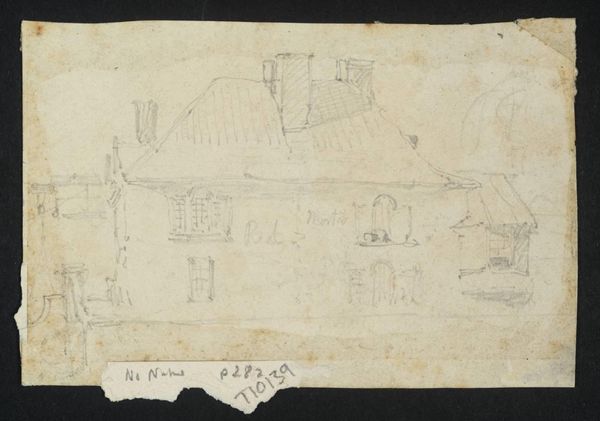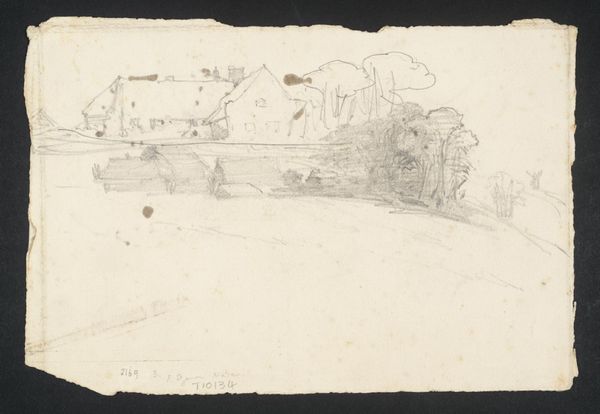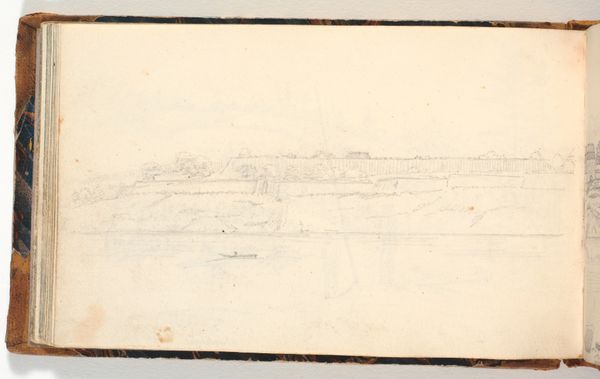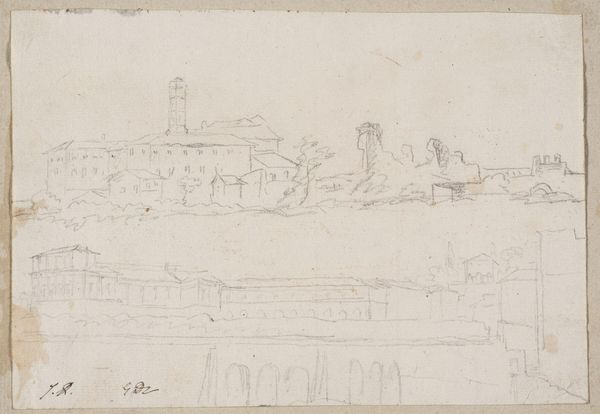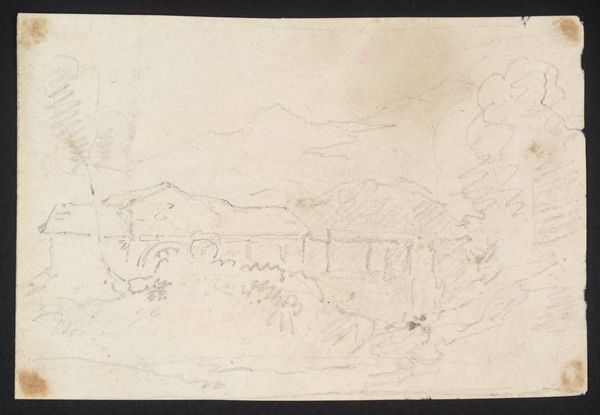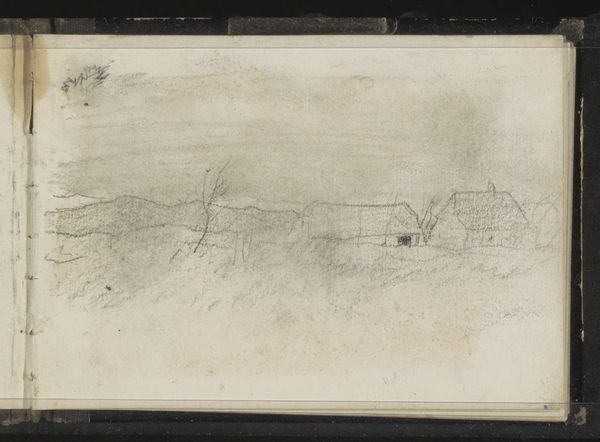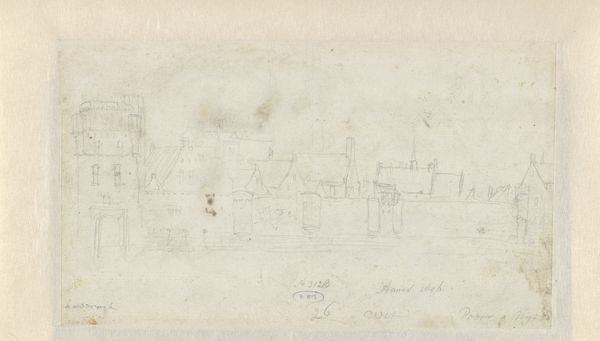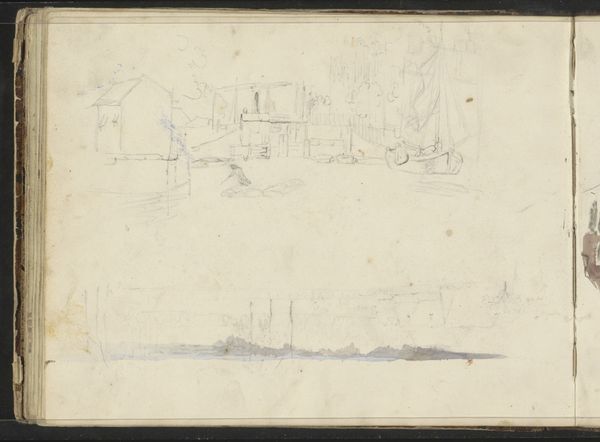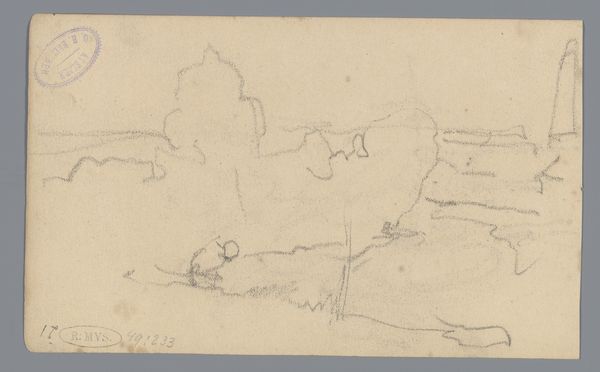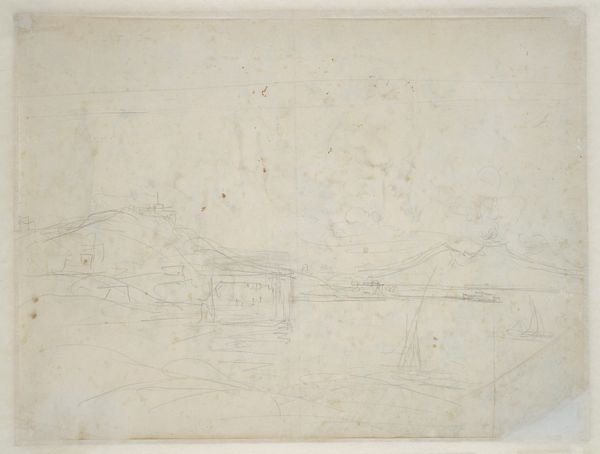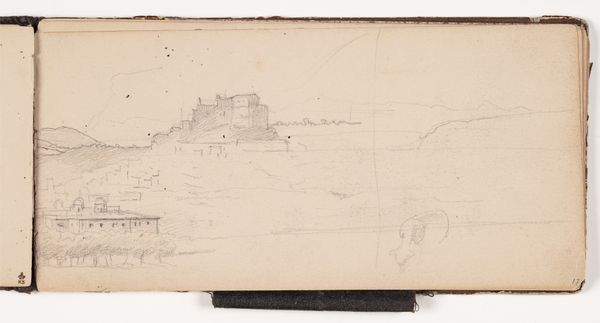![[title not known] by Sir George Howland Beaumont](/_next/image?url=https%3A%2F%2Fd2w8kbdekdi1gv.cloudfront.net%2FeyJidWNrZXQiOiAiYXJ0ZXJhLWltYWdlcy1idWNrZXQiLCAia2V5IjogImFydHdvcmtzLzQ3M2MyN2ViLTMwMmMtNGUyNy04OTI2LTQ5NWVjMWM4NTcxNS80NzNjMjdlYi0zMDJjLTRlMjctODkyNi00OTVlYzFjODU3MTVfZnVsbC5qcGciLCAiZWRpdHMiOiB7InJlc2l6ZSI6IHsid2lkdGgiOiAxOTIwLCAiaGVpZ2h0IjogMTkyMCwgImZpdCI6ICJpbnNpZGUifX19&w=3840&q=75)
Dimensions: support: 186 x 156 mm
Copyright: CC-BY-NC-ND 4.0 DEED, Photo: Tate
Curator: Here we have an intriguing sketch from the Tate Collections, made by Sir George Howland Beaumont, dating back to the late 18th or early 19th century. Editor: There's a definite sense of immediacy; the thin lines and bare paper suggest a fleeting impression, a quick record of a place. Curator: Indeed. Beaumont was a significant figure in the art world, deeply involved in shaping public taste and the establishment of the National Gallery. This sketch gives insight into his artistic process. Editor: And consider the paper itself – its humble quality. It highlights the contrast between the artist’s elite status and the accessible materials he used. Was this for personal use only? Curator: Probably. Sketches like these were often preparatory works, or private exercises, not necessarily intended for public consumption. His influence as a patron, though, played a crucial role in legitimizing landscape painting in Britain. Editor: Which makes it all the more interesting to consider the labor involved, from paper production to Beaumont’s hand moving across it, within a broader framework of class and artistic production. Curator: A reminder that art isn't created in a vacuum, but within specific social and material conditions. Editor: Precisely! This brief look adds to our understanding of both Beaumont’s practice and the art world of his time.
